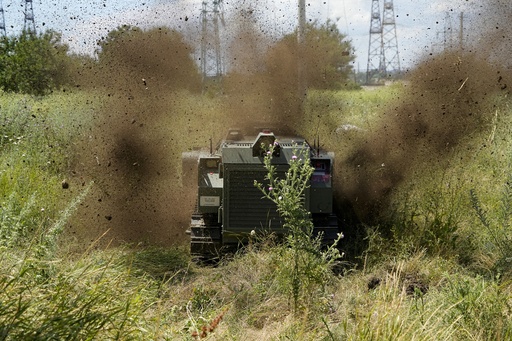
WASHINGTON — The recent U.S. decision to supply Ukraine with antipersonnel land mines marks a significant shift in policy regarding a weapon that has been widely criticized by the global community due to its potential to harm civilians. This action is part of a broader trend in American policy changes surrounding land mines over the past three decades.
U.S. officials emphasize that these mines are essential for Ukraine to impede the advancing Russian military, which is increasingly deploying smaller ground units rather than heavily armored vehicles along the front lines. The Defense Department has already been supplying Ukraine with anti-tank mines throughout the conflict. Defense Secretary Lloyd Austin highlighted that the new policy will enable Ukraine to use “nonpersistent antipersonnel land mines,” which are considered safer as they lose their ability to detonate over time.
Analysts suggest that this policy modification illustrates a growing willingness within the Biden administration to take risks in light of troubling developments on the ground in Ukraine, particularly as concerns arise about potential shifts in U.S. relations with Ukraine and Russia following the upcoming presidential inauguration of Donald Trump on January 20. Trump has been critical of U.S. support for Ukraine, expressing intentions to swiftly conclude the ongoing war.
As Ukraine improves its drone warfare capabilities, Russian forces have begun to alter their strategies, relying less on armored vehicles that are susceptible to drone strikes and opting instead for foot troop movements, making them significantly harder to target.
Examining the types of mines involved, the U.S. is providing Ukraine with antipersonnel mines that have controlled explosive capabilities. These so-called nonpersistent mines are powered by batteries and will not detonate after the battery depletes, which can take as little as four hours to as much as two weeks, depending on the variant.
The U.S. has been insistent on minimizing civilian risks, negotiating commitments from Ukrainian forces to avoid placing these mines in populated areas, with the understanding that they would solely be deployed within their country. During the ongoing conflict, the U.S. has furnished Ukraine with larger anti-tank mines as well, which similarly become inert over time. The Remote Anti-Armor Mine System (RAAM) is an artillery-based method for deploying these anti-tank mines, causing them to scatter upon firing and potentially damaging armored vehicles. These mines can be programmed for self-detonation within specified time frames.
In the international context, the United States is among a small group of major nations yet to ratify the 1997 Ottawa Convention, which bans the use, production, and distribution of antipersonnel mines. As of 2022, a total of 164 countries had joined the treaty, but several significant powers—including the U.S., China, and Russia—have chosen not to sign. Other nations not differentiating themselves from the treaty include South Korea, India, and Pakistan. A notable reason for the U.S. stance is its continued use of mines in the Korean Peninsula for the protection of South Korea against potential threats from the North.
Humanitarian organizations have long urged the U.S. to embrace the ban treaty. The presence of land mines continues to pose threats, with nearly 70 countries still grappling with the consequences of over 110 million mines globally, many of which can remain undetected for extended periods before activation. Reports indicate that the toll of Russia’s invasion has made Ukraine one of the most heavily mined nations in the world, with mines strewn across many of its regions, complicating the military and humanitarian landscape further. Human Rights Watch has noted that a significant number of Russian mines do not have inert capabilities, making them even more hazardous.
The Biden administration’s move has drawn immediate criticism from advocacy groups such as Amnesty International, which called the decision both reckless and a disappointment. Critics argue that it compromises the safety of civilians, going against sentiments previously held by President Biden regarding land mines.
Tracing the evolving U.S. policy, President Bill Clinton had once pursued a strategy to lessen the use of mines and endorse the treaty. However, under President George W. Bush, the administration reversed course, allowing the use of persistent mines until 2010. During President Barack Obama’s tenure, a review led to a ban on land mine usage globally, except for defense operations in South Korea.
Subsequently, President Donald Trump retracted the Obama-era policy, eliminating restrictions on the deployment of inert mines under certain circumstances. When Biden took office, his administration rolled back Trump’s changes, reinstating prohibitions on non-persistent antipersonnel mines outside of the Korean context. In June 2022, a directive stated that all non-essential mines would be destroyed, amidst an existing stockpile of an estimated 3 million antipersonnel mines, with no clear indication of how many might be deemed necessary for South Korea’s defense.
